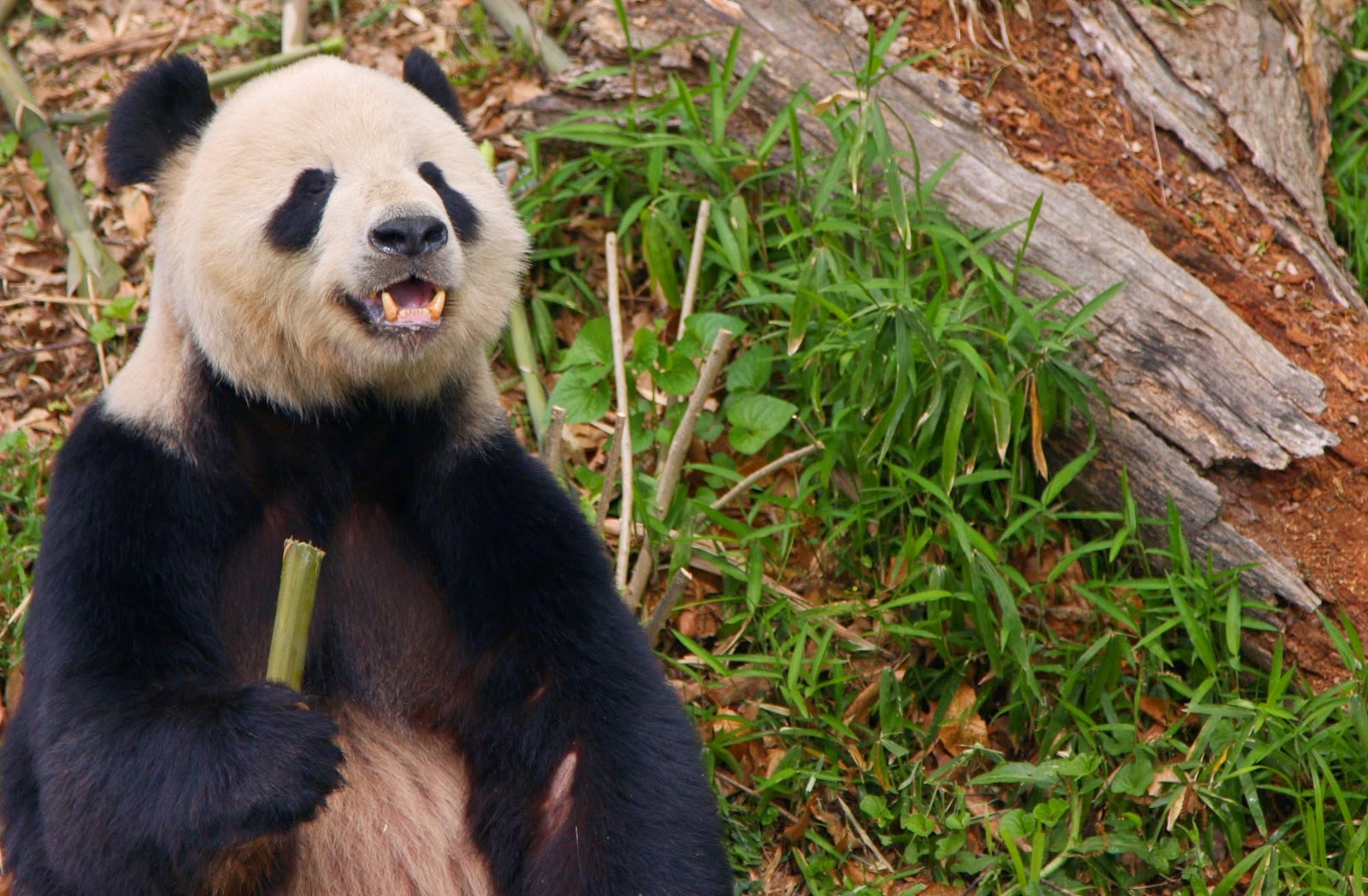Everyone has a wild
side, especially travelers. We instinctually seek out the unknown, explore
the unexplored and we traverse the globe looking for excitement. It's in our
nature, which might be why we feel a kinship with our friends in nature.
I've met plenty of
interesting people in plenty of interesting places around the world. But I have
to admit, some of the most memorable souls I've shared a laugh with, had fur
and tails. Zoos, parks, mountains, forests - the lower levels of the food
chain are sometimes much better company than the top. As long as they
don't turn you into a chew toy, seeking out or stumbling upon animals, either
in the wild or in feigned wild, can add a whole new element to your vacation.
 Washington, D.C. is a great example. The city is
full of tourists exploring monuments, museums and memorials. Most are worth a
visit, but the Smithsonian National Zoo takes the action out of the past and
into the present. The National Zoo is free like many of the museums in D.C.,
and it has undergone a makeover in recent years to make for a park that flows well
from top to bottom. The main attraction is usually the pandas, and the new baby
panda Bao Bao that has set Washington on another panda craze. But there is much
more to the zoo, including a small mammal house packed with everything from
meerkats to marmosets. The deepest belly laugh I ever heard come from my
10-month-old daughter was when a golden lion tamarin bounced around in front of
her. The tamarin was very effective – we left the Zoo with a toy version.
Washington, D.C. is a great example. The city is
full of tourists exploring monuments, museums and memorials. Most are worth a
visit, but the Smithsonian National Zoo takes the action out of the past and
into the present. The National Zoo is free like many of the museums in D.C.,
and it has undergone a makeover in recent years to make for a park that flows well
from top to bottom. The main attraction is usually the pandas, and the new baby
panda Bao Bao that has set Washington on another panda craze. But there is much
more to the zoo, including a small mammal house packed with everything from
meerkats to marmosets. The deepest belly laugh I ever heard come from my
10-month-old daughter was when a golden lion tamarin bounced around in front of
her. The tamarin was very effective – we left the Zoo with a toy version.
Other zoos around the world are also worth a
visit. In Vienna, Austria, in the gardens of the famous Schonbrunn Palace, lies
a sprawling zoo. But instead of paying, visitors can get a glimpse of the animals by
walking along the pathway running behind the menagerie. It loops up and around,
affording views through a fence of rhinos and other zoo inhabitants. It is a
fun contrast to the grandeur and opulence found in much of this great European
city.
But you don’t have to save a specific
itinerary slot for a zoo or safari park. Many times animal encounters are
unplanned, making them all the more exciting.
On a drive back from Canada, I had the
pleasure of seeing a moose trotting through the forest along the road. In
Interlaken, Switzerland, high in the Alps, a St. Bernard and mountain goats greeted
passengers disembarking from the mountain train, a scene straight from a
postcard. Staying at a lake house at Eagle Rock Resort in the Pennsylvania
mountains, we woke one morning to a large family of deer nibbling on grass a
couple feet from the back door. The loud but lazy sea lions at San Francisco’s
Pier 39 left a lasting auditory impression, and the wild bison that surrounded
my car in South Dakota’s Black Hills came close to leaving an impression in my
fender. And of course, the pigeons in Venice’s St. Mark’s Square are one of the
most iconic images in Italy.
The lure of animals
has to do with genuineness and unpredictability – and our desire as travelers to
experience both. We want to live like temporary locals when we go to a foreign
place, which entails eating, drinking and acting unlike we normally would at
home. It's easy to do that in Dublin or Santiago or Los Angeles. Customs can be
learned, cultures can be appreciated and languages can be absorbed. But what
happens when the language is chirping or roaring and the culture is walking on
all fours? Well, as a traveler you get a genuine form of unpredictability, and that
can cause some very memorable experiences. Just make sure your camera is at
the ready and you’re at a safe distance. 
